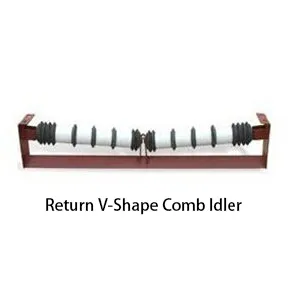 Afrikaans
Afrikaans  Albanian
Albanian  Amharic
Amharic  Arabic
Arabic  Armenian
Armenian  Azerbaijani
Azerbaijani  Basque
Basque  Belarusian
Belarusian  Bengali
Bengali  Bosnian
Bosnian  Bulgarian
Bulgarian  Catalan
Catalan  Cebuano
Cebuano  Corsican
Corsican  Croatian
Croatian  Czech
Czech  Danish
Danish  Dutch
Dutch  English
English  Esperanto
Esperanto  Estonian
Estonian  Finnish
Finnish  French
French  Frisian
Frisian  Galician
Galician  Georgian
Georgian  German
German  Greek
Greek  Gujarati
Gujarati  Haitian Creole
Haitian Creole  hausa
hausa  hawaiian
hawaiian  Hebrew
Hebrew  Hindi
Hindi  Miao
Miao  Hungarian
Hungarian  Icelandic
Icelandic  igbo
igbo  Indonesian
Indonesian  irish
irish  Italian
Italian  Japanese
Japanese  Javanese
Javanese  Kannada
Kannada  kazakh
kazakh  Khmer
Khmer  Rwandese
Rwandese  Korean
Korean  Kurdish
Kurdish  Kyrgyz
Kyrgyz  Lao
Lao  Latin
Latin  Latvian
Latvian  Lithuanian
Lithuanian  Luxembourgish
Luxembourgish  Macedonian
Macedonian  Malgashi
Malgashi  Malay
Malay  Malayalam
Malayalam  Maltese
Maltese  Maori
Maori  Marathi
Marathi  Mongolian
Mongolian  Myanmar
Myanmar  Nepali
Nepali  Norwegian
Norwegian  Norwegian
Norwegian  Occitan
Occitan  Pashto
Pashto  Persian
Persian  Polish
Polish  Portuguese
Portuguese  Punjabi
Punjabi  Romanian
Romanian  Russian
Russian  Samoan
Samoan  Scottish Gaelic
Scottish Gaelic  Serbian
Serbian  Sesotho
Sesotho  Shona
Shona  Sindhi
Sindhi  Sinhala
Sinhala  Slovak
Slovak  Slovenian
Slovenian  Somali
Somali  Spanish
Spanish  Sundanese
Sundanese  Swahili
Swahili  Swedish
Swedish  Tagalog
Tagalog  Tajik
Tajik  Tamil
Tamil  Tatar
Tatar  Telugu
Telugu  Thai
Thai  Turkish
Turkish  Turkmen
Turkmen  Ukrainian
Ukrainian  Urdu
Urdu  Uighur
Uighur  Uzbek
Uzbek  Vietnamese
Vietnamese  Welsh
Welsh  Bantu
Bantu  Yiddish
Yiddish  Yoruba
Yoruba  Zulu
Zulu Exploring the Benefits and Applications of Conveyor Roller Pulley Systems in Material Handling Industry
Conveyor Roller Pulley Essential Components of Material Handling Systems
In the realm of material handling and logistics, conveyor systems play a pivotal role in optimizing transportation efficiency. Among the various components that form the backbone of these systems, conveyor roller pulleys stand out as critical elements that contribute to the seamless operation of conveyors. This article will delve into the significance, types, and applications of conveyor roller pulleys.
Understanding Conveyor Roller Pulleys
Conveyor roller pulleys are cylindrical devices mounted at the ends of a conveyor belt system. They are designed to support and guide the conveyor belt while facilitating its smooth movement. The primary functions of roller pulleys include providing tension for the belt, serving as drive mechanisms, and acting as redirectors for the belt's path. By effectively managing the movement of the belt, roller pulleys ensure that materials can be transported efficiently from one point to another.
Types of Conveyor Roller Pulleys
There are several types of conveyor roller pulleys, each engineered to fulfill specific roles within a conveyor system
1. Drive Pulleys These are the pulleys responsible for imparting motion to the conveyor belt. Equipped with a motor, drive pulleys convert electrical energy into mechanical energy, which helps move the belt and transport materials along the conveyor system.
2. Idler Pulleys Unlike drive pulleys, idler pulleys do not have a motor and are used primarily for supporting the belt. They help maintain tension and align the belt during its operation.
3. Tail Pulleys Located at the end of a conveyor system, tail pulleys ensure that the belt is properly terminated and often facilitate the return of the belt to the drive pulley.
conveyor roller pulley

Applications of Conveyor Roller Pulleys
Conveyor roller pulleys find applications across various industries, including manufacturing, mining, agriculture, and logistics. In manufacturing plants, these pulleys enable the efficient movement of raw materials and finished products, enhancing productivity and reducing manual handling. In mining operations, they facilitate the transportation of mined resources, which often involve bulk materials such as coal, ore, and gravel.
In agriculture, conveyor roller pulleys are used in the handling of crops and fertilizers, simplifying processes like loading, unloading, and transportation. Moreover, in logistics and warehousing, these components play a crucial role in sorting and distributing goods, which is essential for maintaining efficient supply chains.
Importance of Conveyor Roller Pulleys
The importance of conveyor roller pulleys cannot be overstated. They contribute significantly to the overall efficiency, reliability, and safety of conveyor systems. By providing consistent support and facilitating smooth operation, roller pulleys reduce wear and tear on the conveyor belt, thereby minimizing maintenance costs and extending the system's lifespan.
Additionally, the correct selection and installation of conveyor roller pulleys are paramount. Factors such as load capacity, speed, and environmental conditions must be considered to ensure optimal performance. When equipped with the right components, conveyor systems can operate at peak efficiency, ultimately leading to increased productivity and reduced operational costs.
In conclusion, conveyor roller pulleys are fundamental components that play a vital role in the functionality of material handling systems. Their various types and applications cater to diverse industrial needs, making them indispensable in the modern landscape of manufacturing and logistics. As industries continue to evolve, the demand for efficient and reliable conveyor systems, bolstered by high-quality roller pulleys, will only grow.
-
Revolutionizing Conveyor Reliability with Advanced Rubber Lagging PulleysNewsJul.22,2025
-
Powering Precision and Durability with Expert Manufacturers of Conveyor ComponentsNewsJul.22,2025
-
Optimizing Conveyor Systems with Advanced Conveyor AccessoriesNewsJul.22,2025
-
Maximize Conveyor Efficiency with Quality Conveyor Idler PulleysNewsJul.22,2025
-
Future-Proof Your Conveyor System with High-Performance Polyurethane RollerNewsJul.22,2025
-
Driving Efficiency Forward with Quality Idlers and RollersNewsJul.22,2025





























